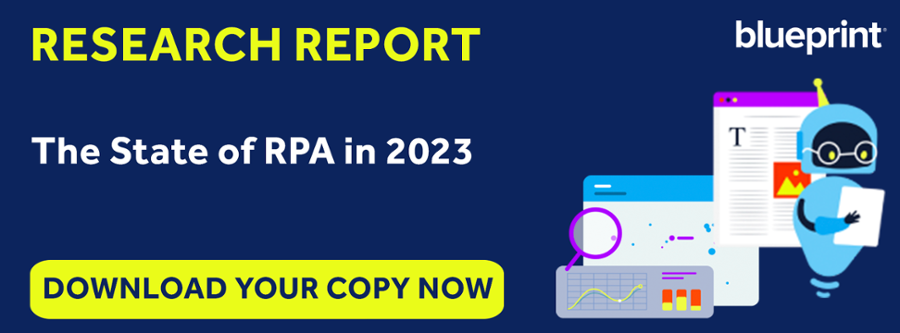The Top 7 RPA Trends of 2023
Like any enterprise-grade technology segment, RPA (robotic process automation) and intelligent automation in general are prone to evolution. The hype cycle for RPA has been accelerated; logically, the same can be said for its application and growing sophistication.
For that reason, we at Blueprint perform market research every year to understand how the automation and RPA landscape is changing. We want to understand how automation estates are growing intricately, the challenges RPA teams are encountering in their practice, and where the next frontier for automation lies.
According to Blueprint’s 2023 research on the State of RPA, here are the top 7 trends we identified.
Trend #1 – The implementation and use of RPA Centers of Excellence is on the rise
According to Blueprint’s research on the State of RPA, 50% of respondents reported that they already have an RPA Center of Excellence (CoE) in place. 39% also claimed that while they don’t have an established RPA CoE, they do plan on implementing one.
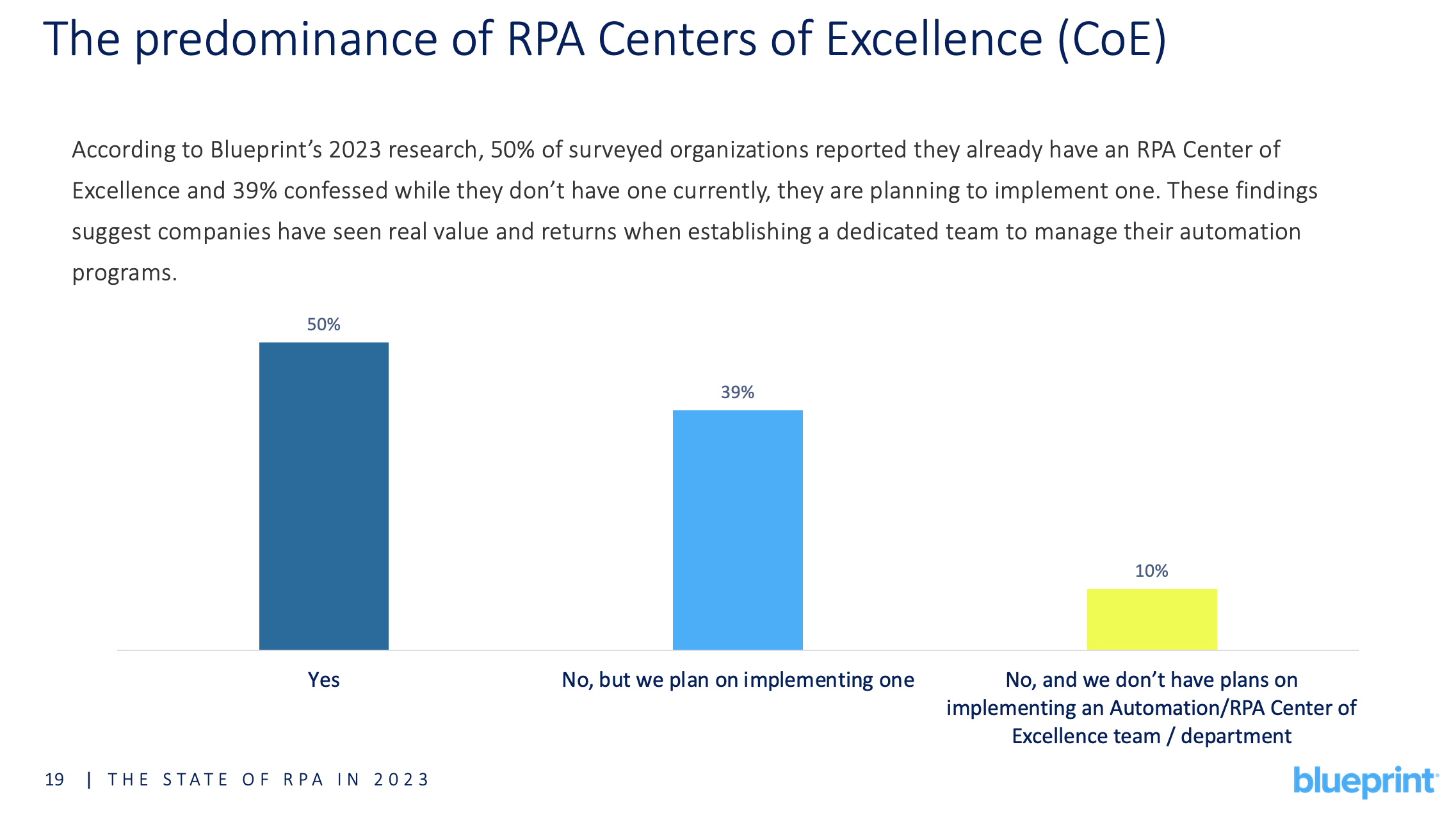
These findings suggest that companies have seen real value from a dedicated centralized or federated team to manage their automation practices. Whether it be better governance, increased standardization, or scale that organizations are after with their automation initiatives, it would appear that RPA CoE’s are effectively delivering on those objectives.
Trend #2 – RPA is being implemented with external help
When questioned on how their RPA programs were initially implemented, only 10% of the organizations that participated in Blueprint’s research reported that their RPA practice was set up with only internal resources.
34% of respondents answered that their automation programs were built with both internal and external resources, while 41% explained that their RPA program was developed entirely by an external partner or vendor.
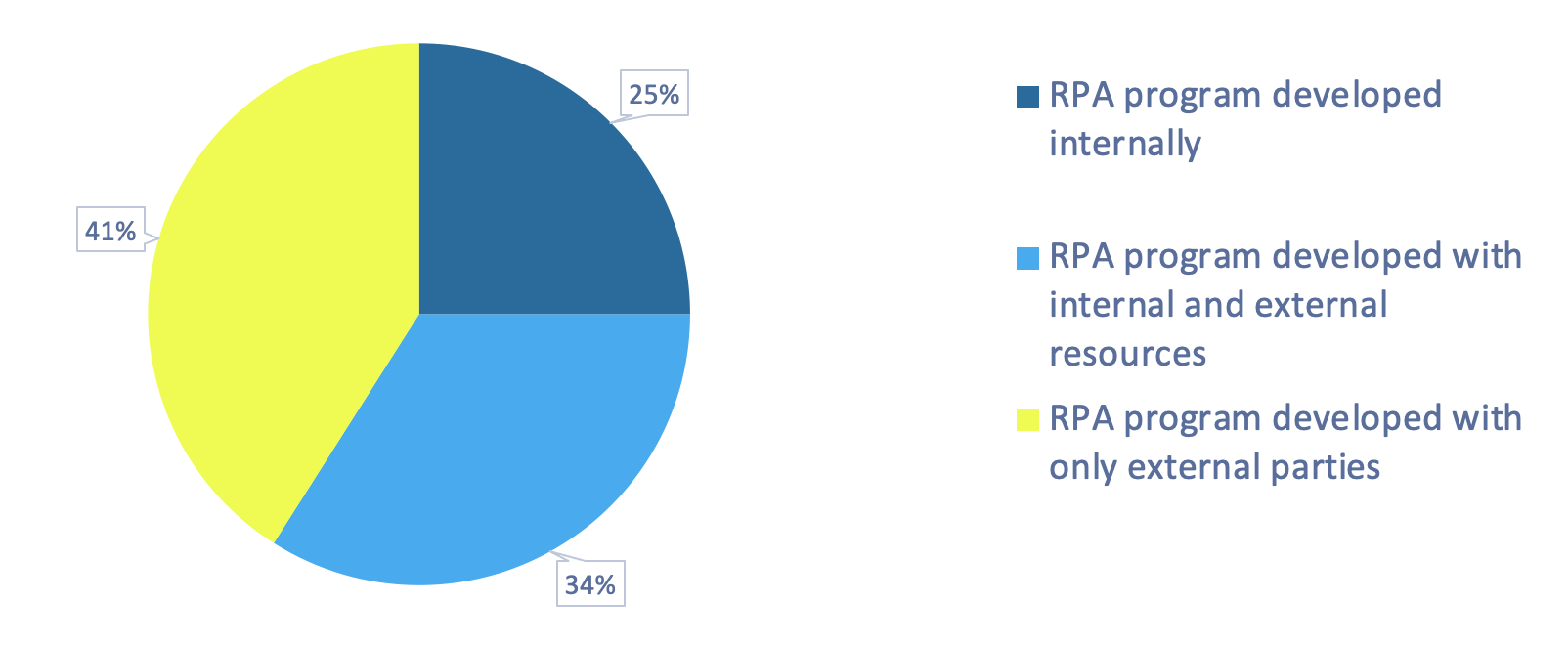
These research findings validate a long-held assumption that the services industry has played a major role in helping organizations adopt and implement RPA in their respective businesses globally.
Trend #3 – Intelligent automation is on the horizon, but RPA makes up the majority of automation estates right now
Though artificial intelligence (AI) may seem to dominate every news cycle, AI is nothing new in the world of automation. For some time, intelligent automation – which combines AI technologies like machine learning and natural language processing to automate more complex, end-to-end business processes instead of just tasks – has been unofficially considered the natural successor to RPA.
According to Blueprint’s research, organizations are slowly experimenting and adopting intelligent automation, but it’s nowhere near ready to take over. 72% of organizations report that their RPA estates are mostly simple, rule-based task automation (RPA) with some intelligent automation. A significant 28% further report that they only have simple rule-based task automation and are yet to implement any semblance of intelligent automation in their RPA portfolio.
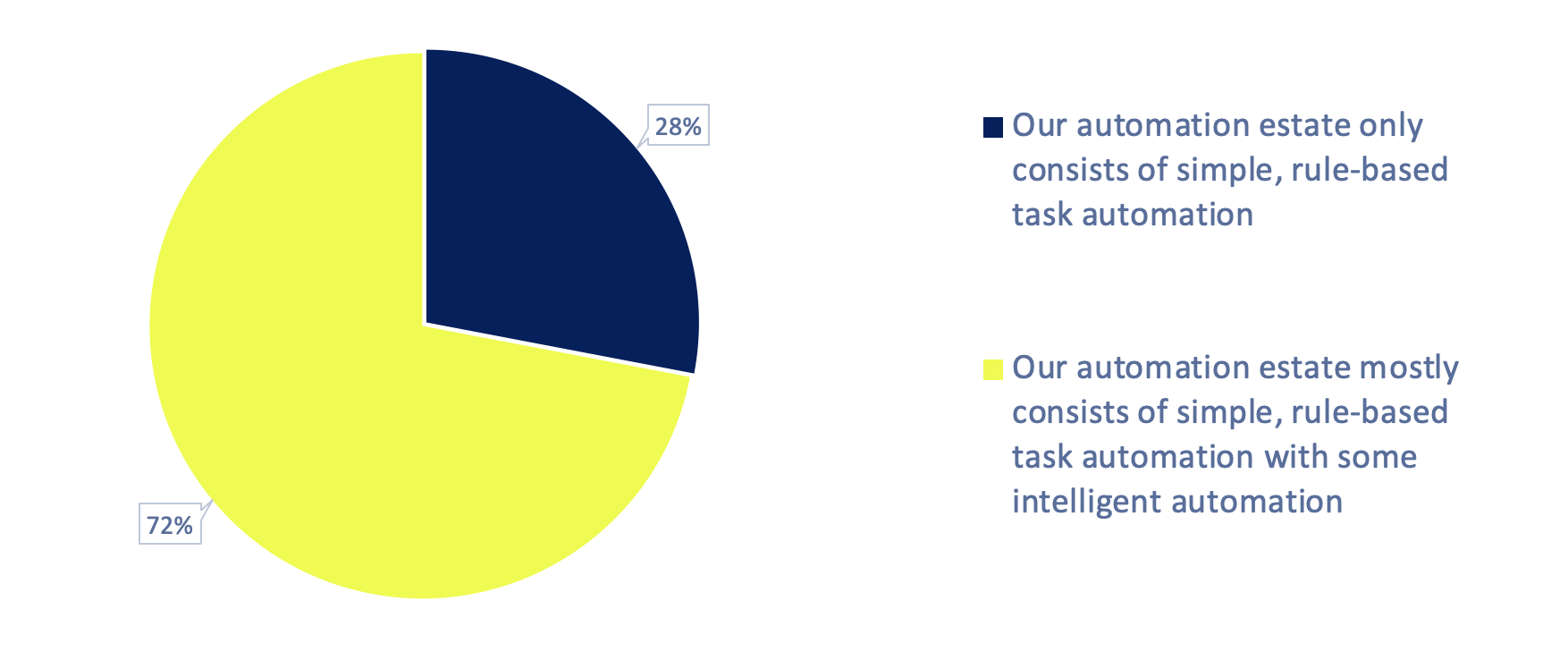
Trend #4 – Microsoft Power Automate is leading the pack
One of the biggest objectives of Blueprint’s annual research on the state of RPA is determining which RPA platform is the most used in the marketplace. While it’s still young compared to its competitors, it was no surprise that Microsoft Power Automate led in terms of usage for the second year in a row.
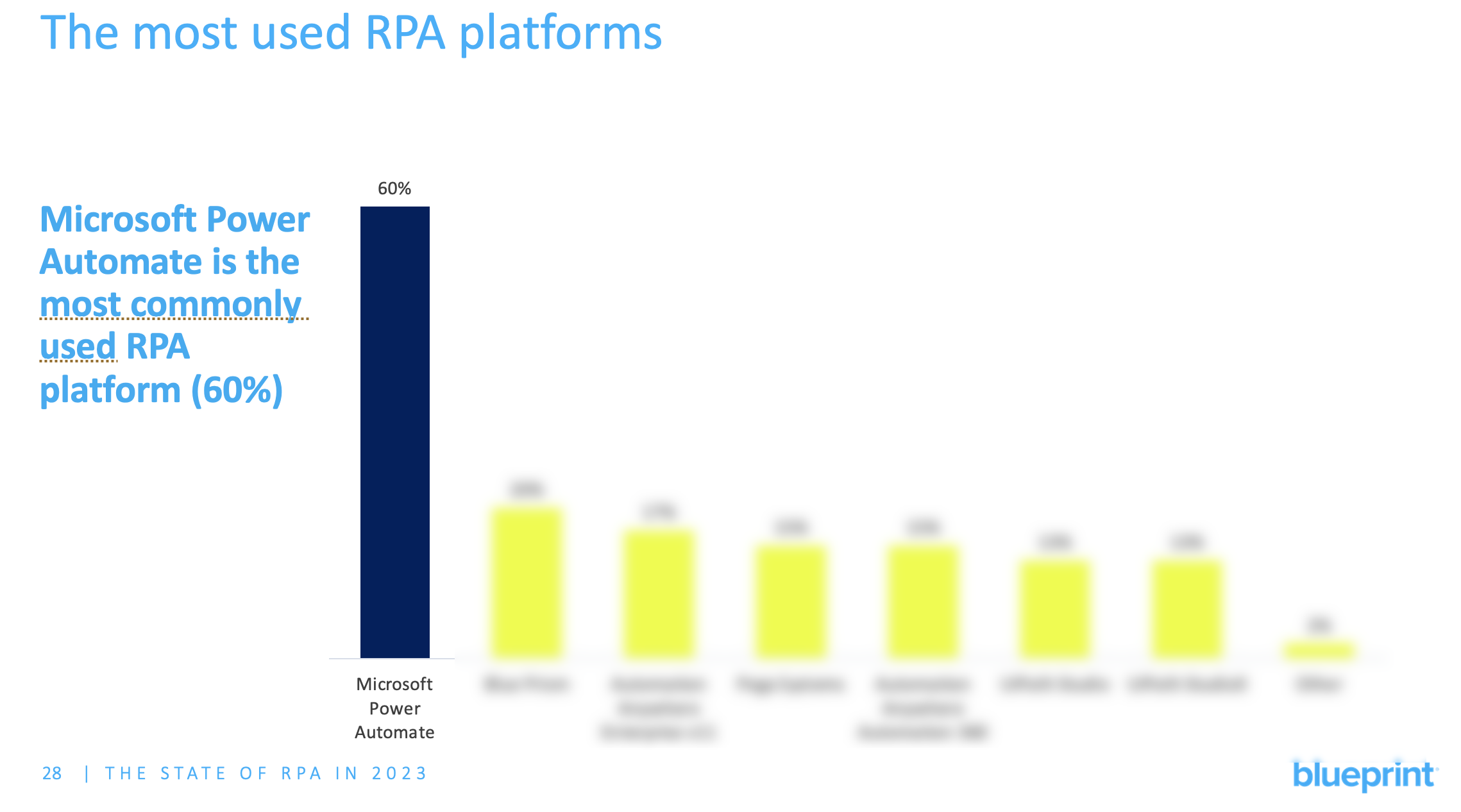
Microsoft boasts the most competitive pricing in the marketplace, which became even more attractive with the recent announcement of Power Automate Premium Licenses. From a licensing point of view, the cost savings are abundantly clear, but there is also cost reduction from an infrastructure standpoint too, not to mention leveraging existing investments made with the Microsoft ecosystem of products.
Learn More: 5 Ways Microsoft Power Automate Reduces Costs
We should also note that Microsoft may be used in tandem with other RPA tools for organizations that still employ a multi-platform strategy, which takes us to trend #5.
Trend #5 – A multi-platform RPA strategy is still quite prominent without plans to change things anytime soon
Consistent with Blueprint’s 2022 research on The State of RPA, 39% of the surveyed organizations reported that they used multiple RPA platforms in their automation initiatives.
There’s a logical explanation for how organizations ended up with multiple and different RPA tools in their companies. The most common reason cited by organizations that use multiple RPA tools is due to compatibility with enterprise architecture (27%). For example, SAP’s automation capabilities are used to automate business processes that interact with SAP. Other reasonable explanations include different business units (like finance and HR) starting RPA initiatives independently at different times.
What required some digging was understanding why half of the organizations using multiple tools (45% to be exact) report that they plan on maintaining their multi-platform strategies in the future. When questioned, those same companies reported that using different tools for specialized use cases, better compatibility with enterprise architecture, and personal preference are the main reasons they’re not planning to consolidate their RPA practice under one tool any time soon.
Trend #6 – Scale and cost reduction are the top RPA priorities right now
Always with an eye for what’s to come, through our research, we want to understand the future objectives that automation leaders are working towards the most.
In 2023, the components of RPA that are garnering the most attention as areas for improvement are scale, standardization, and, unsurprisingly, cost reduction.
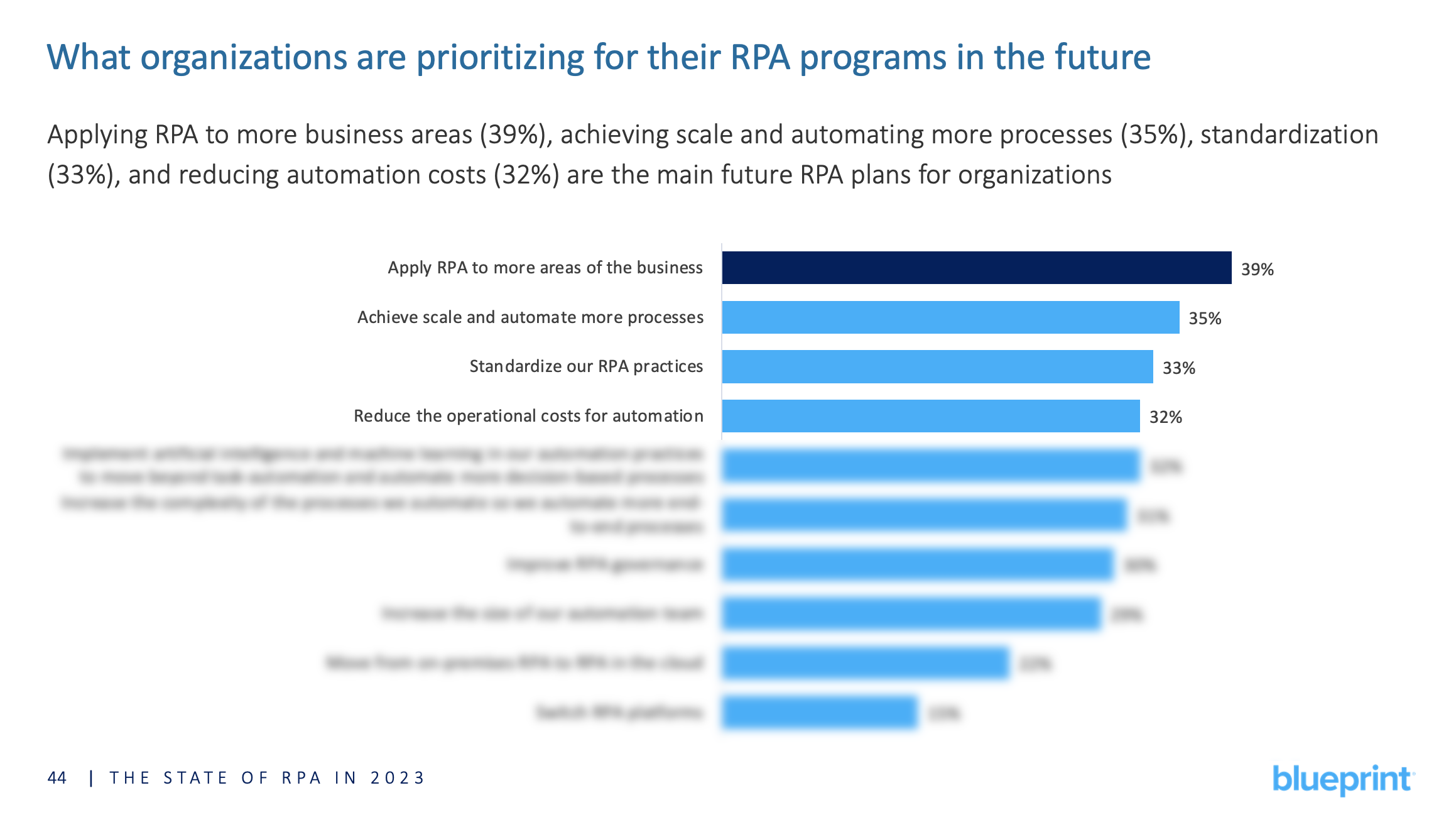
Based on our research, one way organizations are looking to achieve that cost reduction is by migrating to a more cost-effective RPA platform like Microsoft Power Automate.
Trend #7 – Companies are still eager to switch RPA platforms to attain trend #6
As with Blueprint’s 2022 edition on the State of RPA, switching RPA tools and migrating automation estates to new platforms dominated the conversation. 2023 was no different.
Out of the 500 respondents surveyed, more than half (58%) are either in the process of switching RPA tools, considering switching RPA platforms, or have already migrated their RPA estates to a different tool in the past.
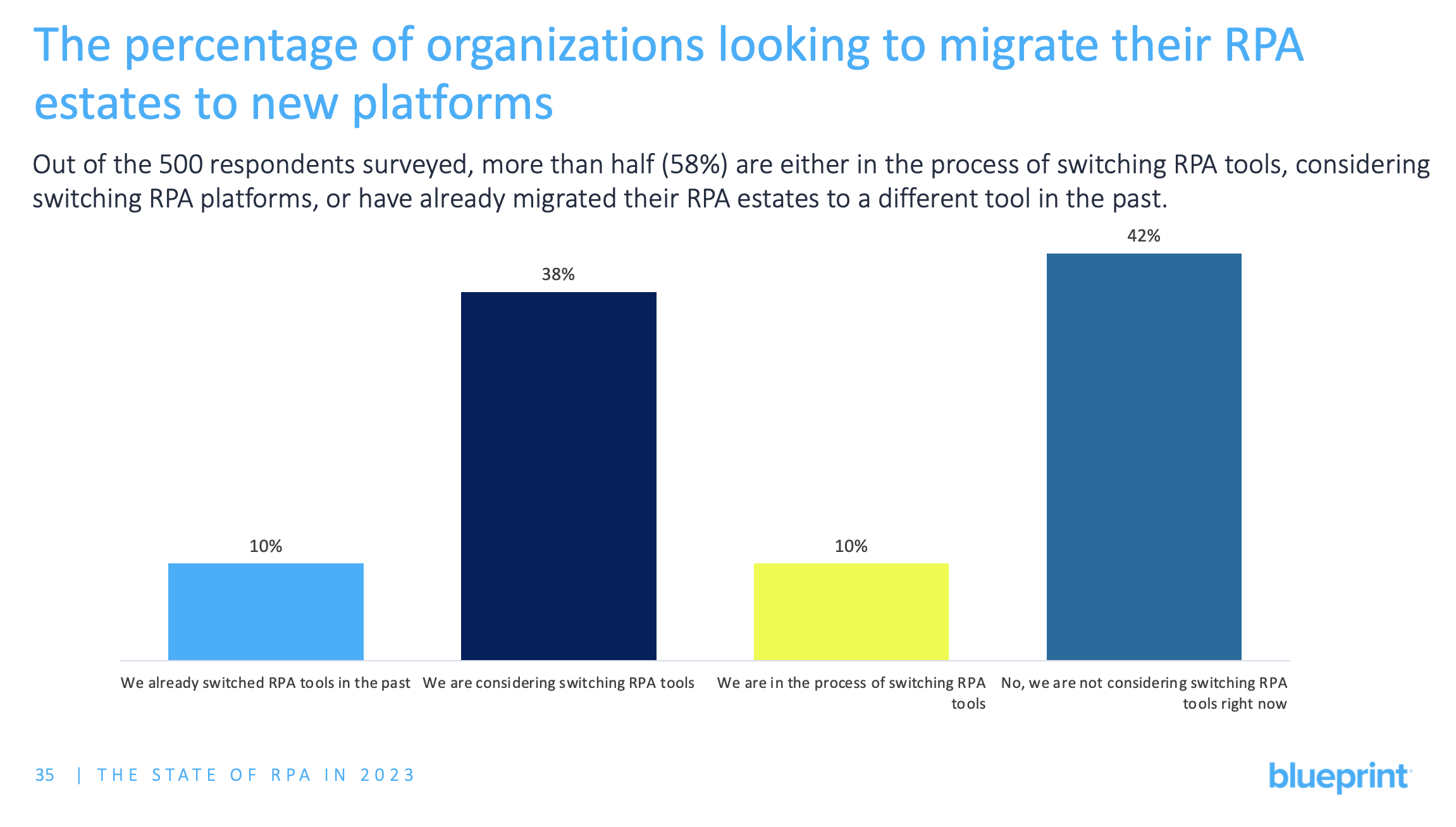
Considering that cost-reduction and scale are major priorities RPA leaders are driving towards, and providers like Microsoft Power Automate are delivering more competitive pricing structures and intuitive user interfaces that open up automation delivery to the average business user, it’s no wonder there is so much interest in RPA migration.
This has just been a quick glance at some of the deep and profound insight Blueprint’s research on the state of RPA offers. For all the stats and trends collected from around the world on the State of RPA in 2023, download your very own copy of Blueprint's research report.
Share this
Recent Stories

5 RPA Resolutions to Keep for 2024

The Top 4 Reasons Organizations Are Opting for RPA Migrations in 2023


